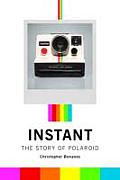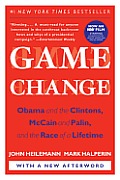
I think almost every magazine writer has a little bit of book envy. I get plenty of satisfaction out of my job — I work at
New York magazine, where I write and edit stories about culture and urban affairs — and I don't feel unfulfilled by it. (Although around hour 11 of a 12-hour deadline day, I might tell you otherwise.) Yet when you work on a weekly magazine, unless you're a top columnist or feature writer, about the biggest play you can hope for, in this diminished time for print, is that a story gets aloft online and goes viral. Once in a blue moon, a feature will blow up big and become a book or even a feature film. The two best to come out of
New York magazine are
Saturday Night Fever and
GoodFellas, both of which, I think it's fair to say, are pretty damn good. But that's really like hitting the lotto: you can't expect it ever to happen to you, and if it does, well, great — you get to buy a beach house.
My colleagues who've written books do not have beach houses. We've all done it because it's a good, interesting thing to do — we like the idea of a sustained piece of work, one that has a life beyond next week. Bound copies of magazines, or their Web-archive equivalents, aren't the same, even if they're excellent: most of our stories are so heavily edited, packaged, rearranged, and cut that they are collective works, as much about the institution and its editorial product as about the writer. Nor do we write books strictly to make extra money: all but a couple of officemates I know have done the work for small advances with little hope of a big payday (and zero hope of a movie deal). John Heilemann, the coauthor of Game Change, is a notable exception — his latest advance went well into seven figures, and I suspect he'll more than earn it out. Again, though, that's an arm of the book business that bears little resemblance to the one where I wrote.
If my colleagues do it for relatively little, I probably did it for even less. My deal for Instant: The Story of Polaroid was quite small — small enough that I couldn't afford to take a leave from work. My wife and I had a one-year-old when I signed on, and I learned something over the next few months. If you have a heavy-duty day job, a book to write, and a baby to tend, you can do any two of those things in a straightforward way. Juggling all three will take you right up to the edge of lunacy, the point where zombie-level sleep deprivation is not so much a problem as a simple fact. Every time you're thinking about one of those three things, one of the others taps you on the shoulder. If, God forbid, the kid falls asleep and you want to zone out and watch a baseball game, a little voice switches on in your head: "Shouldn't you be writing?" Vacations disappear, sucked into the maw of The Manuscript. So does housecleaning. So do Saturdays and, especially, the treasured 90 minutes between 9:30 and 11:00 p.m. when the kid has dozed off but you still have a little energy left. My research required a few weeks in Boston and Cambridge, where Polaroid had its headquarters, and when a monster blizzard lopped the initial four days off my first trip there, I began to wonder if the whole project was doomed. (I caught up when I went back a few months later, in July. There was a lot less snow then.)
My wife and I have a pretty balanced child-care relationship, but there were a lot of Saturdays when she'd say, "I'm taking him to the playground and the supermarket — you've got 90 minutes," and I'd dive into the research I'd done and try to produce a few hundred words' worth of prose. A couple of decades of magazine deadlines have made me a fast writer, and I had a too-long, too-ragged manuscript roughed out in about nine months. To avoid feeling overwhelmed, I treated the nine chapters as discrete but connected magazine stories, and was able to pace the project off that way. Fortunately, the book is a history with a clear story arc, told more or less chronologically with a couple of digressions, so from the beginning I knew roughly how it would go and could get on the right path from the start.
It was the editing that was hardest. My practice, with almost every magazine article I've ever written, is to write a first draft that's pretty close to where I want it to end up, then bore in and revise and tighten, revise and tighten, revise and tighten. Then I read it again and again. Then once more. Then a couple of other times. Every time through, it gets combed over, refined, cleaned up, made pithier. And then once more again. I don't rewrite to death, but I definitely need many of those cycles, nitpicking all the way, to make something as good as I want it to be.
 That didn't really work with a book. When I'm writing a shortish magazine story, each trip through the manuscript takes half an hour. It's sprinter's work. Even a short book takes two or three days to read over that way, and it's almost impossible to get the whole thing in front of you at once, so you can never quite see the scope or sweep of it. If you're too heavily focused on one section or another, it's wrapped around you as if you're sitting in the front row at a CinemaScope theater. And doing that kind of focused read 8 or 10 or 15 times, as is my habit when a story is roaring along toward the presses, turned out to be nearly impossible. My ever-patient editor, Dan Simon at Princeton Architectural Press, just kept getting rounds of little but substantive tweaks, in one pass after another: I'd catch word repetitions, lumpy sentences, little fact changes. (That was another thing that took adjustment: magazines have fact-checkers and book publishers do not. I'm careful, but I'm sure a couple of glitches got through. Actually, I know of one, and we're fixing it in the second printing. It's small, and I'm not telling.)
That didn't really work with a book. When I'm writing a shortish magazine story, each trip through the manuscript takes half an hour. It's sprinter's work. Even a short book takes two or three days to read over that way, and it's almost impossible to get the whole thing in front of you at once, so you can never quite see the scope or sweep of it. If you're too heavily focused on one section or another, it's wrapped around you as if you're sitting in the front row at a CinemaScope theater. And doing that kind of focused read 8 or 10 or 15 times, as is my habit when a story is roaring along toward the presses, turned out to be nearly impossible. My ever-patient editor, Dan Simon at Princeton Architectural Press, just kept getting rounds of little but substantive tweaks, in one pass after another: I'd catch word repetitions, lumpy sentences, little fact changes. (That was another thing that took adjustment: magazines have fact-checkers and book publishers do not. I'm careful, but I'm sure a couple of glitches got through. Actually, I know of one, and we're fixing it in the second printing. It's small, and I'm not telling.)
So why did I do it? Well, as I said up top, I liked the idea of writing at length on one subject. But the truth is, I couldn't say no to this story once I'd stumbled upon it. Polaroid, the company, was unbelievable in its day — it was a place where art met technology to produce an invention that, at its peak, made a billion photographs every year. While researching its rise, its slow decline and collapse, and its tiny but fierce revival over the past few years, I discovered that I had a story in three acts, like a good screenplay. Edwin Land, the founder of Polaroid and inventor of instant photography, was irresistible, a larger-than-life figure who appeared on the covers of both Time and Life in the same year. And that's where my magazine sensibility may have been most useful: when a good story with a great central character is in front of me, I know enough not to ignore it.
It was also the right time to get this history down on paper. Polaroid closed its analog-film business in 2009, providing a natural endpoint to the narrative. After the company's initial bankruptcy filing, its archive of millions of pages of documents went to Harvard Business School's Baker Library, and a large chunk was opened to researchers in late 2009, meaning that I could dive in. And a lot of the principal figures in Polaroid's history are alive and well, so I could talk to them firsthand. If I'd tried to write this book a few years earlier, I couldn't have gotten to the documents, which had been closely held by Polaroid. And if I waited a few more years, some of those older folks would be gone.
This particular book will not get me a beach house, almost surely. But I like to think of the day a shareholder buttonholed Edwin Land at a Polaroid annual meeting and suggested that he'd been spending too much on research and not enough on dividends. (Land, a relentless perfectionist when it came to R&D, was often criticized on Wall Street, even as his company's stock kept rising and splitting and rising again.) "What about the bottom line?" the shareholder asked. "The bottom line?" Land replied, sounding appalled. "The bottom line is in heaven."